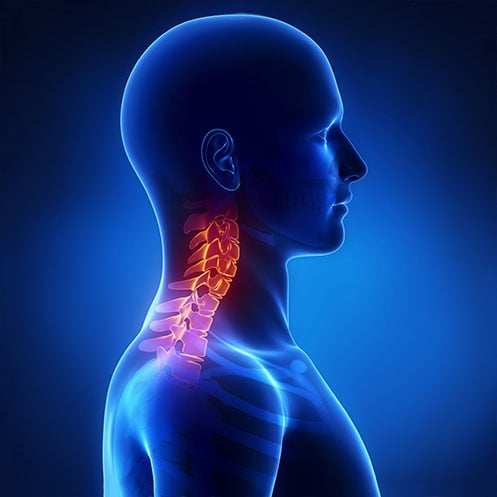Navigating Your Diagnosis: Chronic Hand Pain Evaluation Explained
Living with chronic hand or wrist pain can be both frustrating and isolating. You may be wondering what’s behind the pain, whether it will ever go away, and what your options are for long-term relief. At The Center for Hand and Upper Extremity Surgery (HUES), Dr. Sidney Rabinowitz offers deep expertise in diagnosing and treating even the most complex hand conditions.
“When someone comes to me with chronic pain, I don’t just look at the symptoms—I work to uncover the source,” says Dr. Rabinowitz. “We take the time to get it right, because a precise diagnosis is what leads to real, lasting relief.”
Below, we outline the process for evaluating and diagnosing pain in hands and fingers, including what goes into building a plan for chronic hand pain treatment. By understanding the potential causes and available treatment options, you can gain clarity and confidence in managing chronic pain in your hands, wrists, and fingers—helping you take the next step toward relief and healing.
Understanding the Causes of Your Pain
Many conditions and complications can lead to chronic hand, wrist, and finger pain. Some of the most common include:
- Arthritis: As arthritis develops — which involves inflammation and degeneration in the joints and surrounding areas — it can lead to chronic joint pain in hands.
- Injuries and Overuse: Injuries such as dislocations, sprains, or fractures can sometimes lead to chronic hand and wrist pain. Additionally, repetitive use can contribute to persistent discomfort, particularly in conditions like tenosynovitis, trigger finger (stenosing tenosynovitis), or De Quervain’s tenosynovitis, which affects the tendons on the thumb side of the wrist.
- Neurological and Autoimmune Causes: Nerve compression, including carpal tunnel, as well as autoimmune conditions like lupus can develop into chronic hand and wrist pain.
While these are some of the most common causes of chronic hand pain, it's important to understand that every case is different.
“Two people can have the same diagnosis but need very different treatment paths,” Dr. Rabinowitz explains. “That’s why we rely on thorough evaluation and patient history—not just imaging or test results—to determine the best course of care.”
Your First Consultation
To ensure your doctor can set the correct diagnostic plan, come to your first consultation prepared. Document the details of your symptoms, including what worsens or relieves the pain and how long you have experienced it. Bring along any relevant medical history, especially past diagnoses or consultations related to the causes outlined above.
Dr. Rabinowitz’s goal is to understand the full context of your pain—from lifestyle habits and past injuries to potential nerve or joint issues. His thorough approach ensures no detail is overlooked, especially in cases where symptoms have persisted or other treatments have failed.
“Patients often come to us after trying everything else,” Dr. Rabinowitz shares. “We welcome that. Sometimes it takes a different perspective and a deeper dive to finally pinpoint what’s going on.”
The Physical Exam
Your physical exam is a key part of the evaluation process. Your doctor will want to understand the structure and functionality of your hand to determine your diagnosis.
Key aspects of the examination:
- Assessing functionality and range of motion
- Checking for visible abnormalities
- Noting specific pain points
Diagnostic Tests
Your evaluation is likely to include some diagnostic tests as well. These tests give your surgeon a clear picture of what’s happening inside your hand and wrist. These tests give your surgeon a clear picture of what’s happening inside your hand and wrist. At HUES, Dr. Rabinowitz may use advanced imaging or nerve conduction studies to evaluate whether surgical intervention—such as nerve decompression or tendon repair—is appropriate, or if a non-surgical treatment plan will be sufficient.
“We don’t jump to surgery,” Dr. Rabinowitz emphasizes. “But when it’s the right choice, we make sure the plan is precise, targeted, and tailored to your lifestyle and goals.”
Overview of essential tests:
- Blood Tests: to rule out conditions such as rheumatoid arthritis.
- Nerve and Electrophysiological Tests: to assess muscle and nerve function.
- X-Ray or MRI: to identify issues such as fractures, arthritis, joint deformities, or damage in tendons, ligaments, or nerves.
Interpreting the Results
Combining your medical history, pain details, exam insights, and diagnostic test results allows your doctor to create the most targeted plan for chronic hand pain treatment. There are several options for what to do about chronic hand and wrist pain, and an expert practitioner can help you identify the best treatment for your condition.
Based on your results, Dr. Rabinowitz will tailor a treatment plan to your condition and goals. For some, physical therapy or targeted injections may be enough. For others, he may recommend a surgical procedure—such as nerve decompression, joint denervation, or complex revision surgery—especially if prior treatments haven’t delivered lasting relief.
“Our role is to guide you with clarity,” says Dr. Rabinowitz. “Whether your treatment is surgical or non-surgical, you’ll understand exactly why we’re recommending it and how it fits into your overall recovery.”
- Corrective procedures, such as replantation revision or orthotic implant removal.
- Fasciotomy (relieving pressure with a small incision)
- Joint replacement surgery
- Nerve surgeries, such as nerve decompression, nerve grafts, nerve transfers, and joint denervation
Your doctor should clearly explain your plan and be sure you understand why you are focusing on certain procedures or methods over others.
Find Your Best Chronic Hand Pain Treatment
Chronic pain in your hands or fingers can take a toll on your daily life—but the right specialist can make all the difference. Dr. Sidney Rabinowitz is known for his collaborative, hands-on approach, combining leading-edge techniques with careful listening and patient education.
“We want patients to leave our office feeling heard and hopeful,” Dr. Rabinowitz says. “Our goal isn’t just to treat pain—it’s to restore confidence and function so you can get back to living your life.”
Ready for answers and a personalized plan? Request an appointment with Dr. Sidney Rabinowitz and take the first step toward long-term relief.









